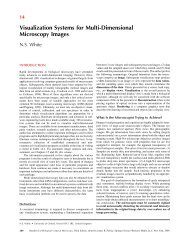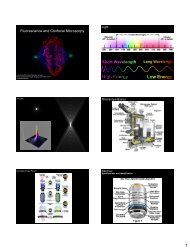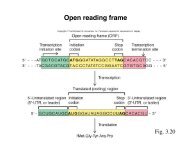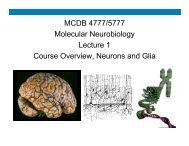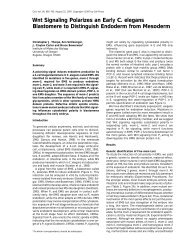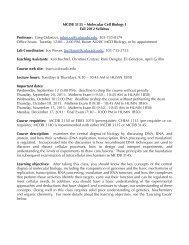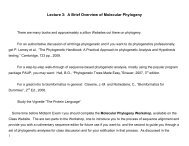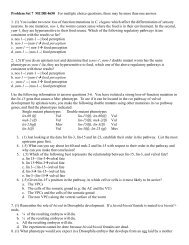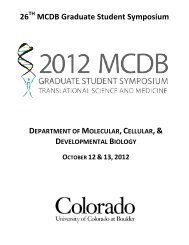Lecture 2: Describing Microbial Diversity: the ... - MCD Biology
Lecture 2: Describing Microbial Diversity: the ... - MCD Biology
Lecture 2: Describing Microbial Diversity: the ... - MCD Biology
You also want an ePaper? Increase the reach of your titles
YUMPU automatically turns print PDFs into web optimized ePapers that Google loves.
23<br />
B. When “molecular phylogeny” first got started, considerable work was done with protein sequences, e.g.<br />
cytochrome C, hemoglobin.<br />
1. But proteins are hard to get and sequence; it is now easier to isolate/sequence genes.<br />
2. Most protein genes are “shallow” clocks, <strong>the</strong> result of relatively recent evolution; e.g. E. coli doesn’t have<br />
hemoglobin.<br />
8. Choice of molecules for comprehensive (all organisms) phylogeny -- ribosomal RNAs (rRNAs).<br />
A. Ribosome -- carries out protein syn<strong>the</strong>sis<br />
Small subunit Large subunit<br />
S L “23S” rRNA (LSU): 3000-5000nt<br />
“16S”-“18S” (SSU) rRNA: 1500-2000nt “5S” rRNA - 120 nt<br />
ca. 25 proteins ca. 30-40 proteins<br />
B. rRNAs present in all organisms and <strong>the</strong> major organelles (mitochondria and chloroplasts).




